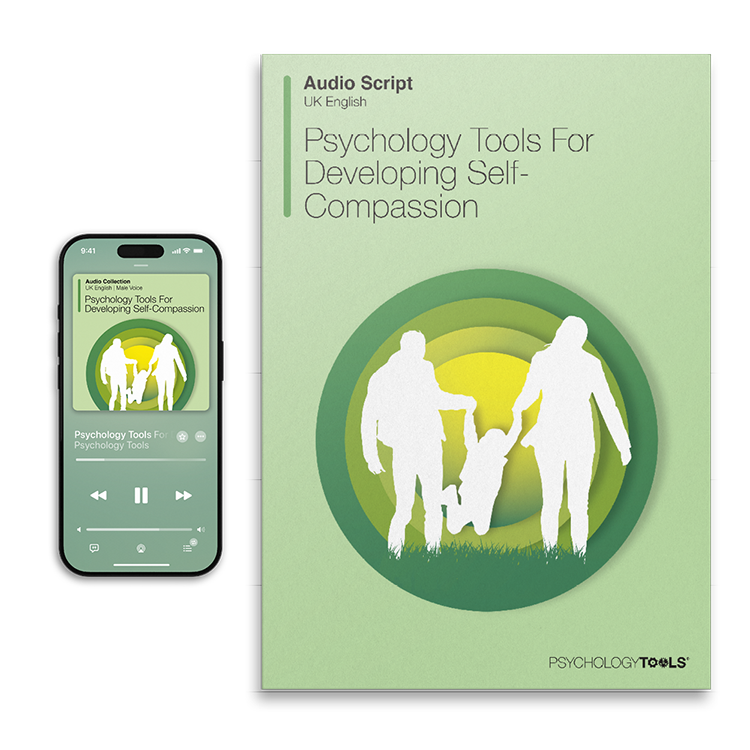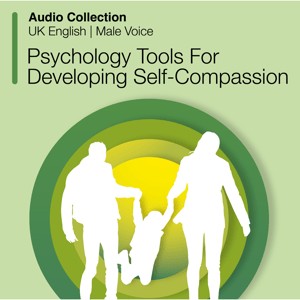Body Posture
The Body Posture exercise is taken from the Psychology Tools For Developing Self-Compassion audio collection. This short experiential practice invites the listener to experiment with their body posture, and reflect upon how it affects their feelings.

Related resources
Tags
Languages this resource is available in
- English (GB)
- English (US)
Techniques associated with this resource
Introduction & Theoretical Background
One of the aims of compassion focused therapy (CFT) and compassionate mind training (CMT) is to activate and develop the soothing system, as this allows us to counteract the effects and stresses of the threat and drive systems. In simple terms, when the soothing system is active, we are more inclined to feel and give compassion. Like any practical skill, however, the soothing system is developed and strengthened through training and practice.
The Body Posture exercise is a track taken from the Psychology Tools For Developing Self-Compassion audio collection. Studies have found that in comparison to a submissive pose, when people embody a confident posture, they experience stronger feelings of confidence and power, and higher self-esteem (Körner, Petersen & Schütz, 2021). In this exercise, the listener is guided to adopt a variety of different postures, and to reflect at each stage on how their posture makes them feel.
Therapist Guidance
The Psychology Tools For Developing Self-Compassion audio collection is for anyone who wants to learn more about the ideas and practices of compassion focused therapy. It has been designed to be versatile, so it is suitable to support work with therapists who have been trained in compassion focused therapy, or to be used as a stand-alone collection of exercises. To assist the integration of the exercises into their clinical work, therapists can download the scripts for each exercise and use them in-session.
Individual tracks from the audio collection can be downloaded as .MP3 files, which can be played in most media player apps.
The simplest way to share an audio track with your clients is by using the Psychology Tools ‘Email a client’ function. After obtaining their consent, you can send it directly from this page by clicking ‘Send securely to my client’. Your client will receive a secure email containing
References And Further Reading
- Gilbert, P. (2014). The origins and nature of compassion focused therapy. British Journal of Clinical Psychology, 53(1), 6-41.
- Gilbert, P. (2020). Compassion: From its evolution to a psychotherapy. Frontiers in Psychology, 3123.
- Irons, C., & Beaumont, E. (2017). The compassionate mind workbook: A step-by-step guide to developing your compassionate self. Robinson.
- Irons, C., & Heriot‐Maitland, C. (2021). Compassionate Mind Training: An 8‐week group for the general public. Psychology and psychotherapy: Theory, research and practice, 94(3), 443-463.
- Leboeuf, I., Andreotti, E., Irons, C., Beaumont, E., & Antoine, P. (2022). A randomized controlled study of a French compassionate mind training. Mindfulness, 13(11), 2891-2903.
- Savari, Y., Mohagheghi, H., & Petrocchi, N. (2021). A preliminary investigation on the effectiveness of compassionate mind training for students with major depressive disorder: A randomized controlled trial. Mindfulness, 12(5), 1159-1172.




